How to manage the notifications and permissions of apps through settings on a Galaxy phone?
Your Galaxy phone is optimized to use and set up apps. If necessary, you can set access permissions for all types of apps at once, or individually select and set notifications for apps. To manage notifications and access permissions through settings, check out the guide below.

Note: Before you try out the recommendations below, be sure to check if your device's software and related apps are updated to the latest version.
If app notifications are disabled, you will not receive notifications for the incoming messages from the app. In addition, if you'd like to remove unwanted notifications separately, follow the steps below.
Step 1. Go to Settings, and then select the Apps menu.
Step 2. Choose one app that you want to manage from the list of all the installed apps.
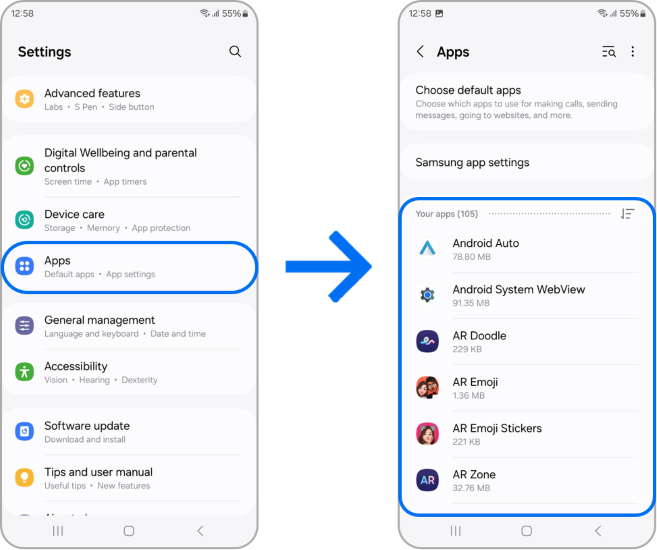
Note: To find the apps that you want, search using the magnifier or search icon on the top right.
Step 3. Tap on the Notifications.
Step 4. You can activate or deactivate notifications at once by tapping Notification categories then tapping the switch of Allow notifications, and you can also select the features you want to receive notifications for, e.g. the Chrome app.
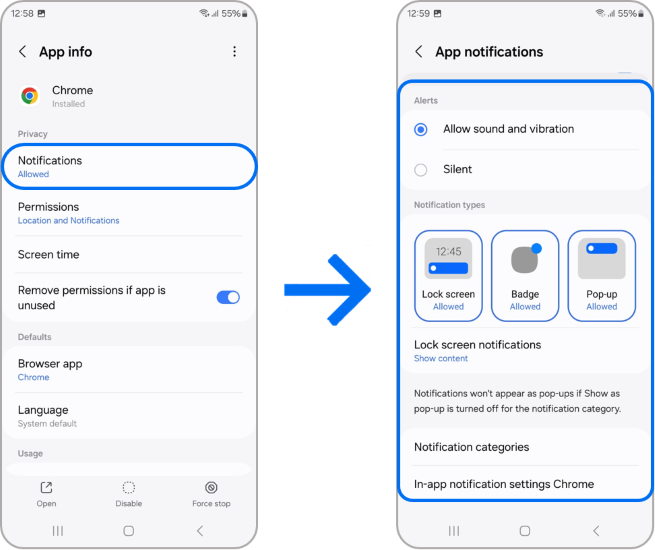
Note: The features of the notification setting may differ for each app.
While installing or using the application, you may be prompted to give your permission to access various functions. For example, Email may ask for permission to see your Contacts, so it can import your friends' contact info. If you have given permission by accident, you can always change the settings. The access permissions can be managed through the Permission manager at once.
Step 1. Go to Settings, and then select the Apps menu.
Step 2. Tap on the more options (three vertical dots) icon.

Step 3. Choose the Permission manager.
Step 4. You can check the list of permissions. Select the feature for which you want to check permissions.
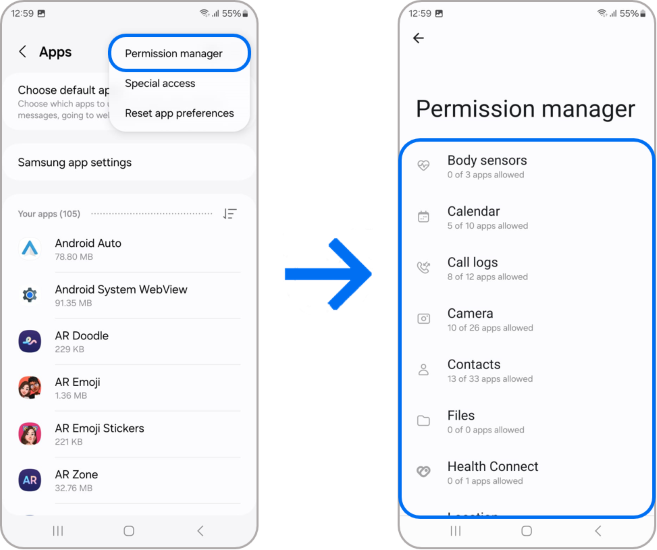
Step 5. If you want to change the access of certain applications, select the one you want to allow or deny. For example, the Galaxy Wearable app that is allowed access to the Location feature.
Step 6. You can choose one of following:
- Allow all the time: the application accesses this data, even when it is not in use.
- Allow only while using the app
- Ask every time
- Deny
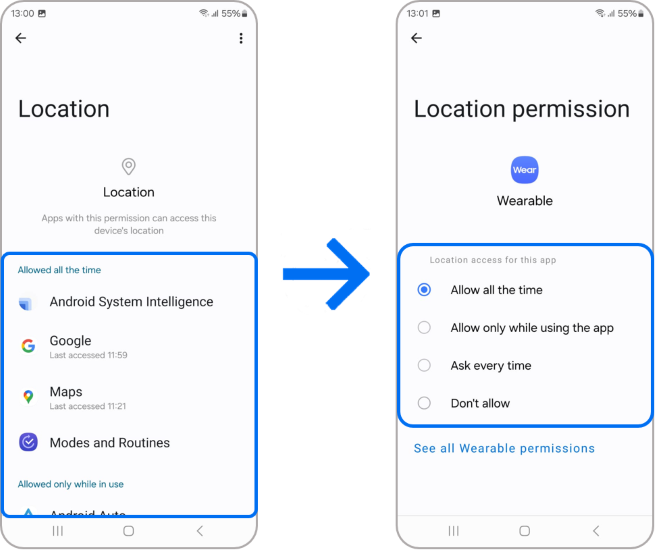
Note: Denying certain permissions may affect the operation of some applications. In this case, a notification may appear.
You can also access information about the permissions of one individual app. Start with the Apps settings menu.
Step 1. Choose one app that you want to manage from the list of all the installed apps, e.g. the YouTube app.
Step 2. Tap on Permissions.
Step 3. You can check the details of the permissions for the app. Select one of the permissions to change in order to allow or deny it.
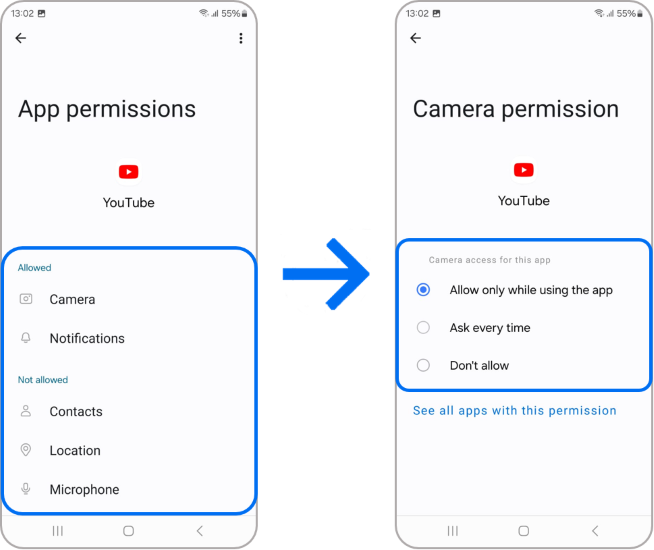
Note:
- Device screenshots and menu may vary depending on the device model and software version.
- If you are still facing issues, you can call our contact center and our helpful agents will assist you.
Thank you for your feedback!
Please answer all questions.
